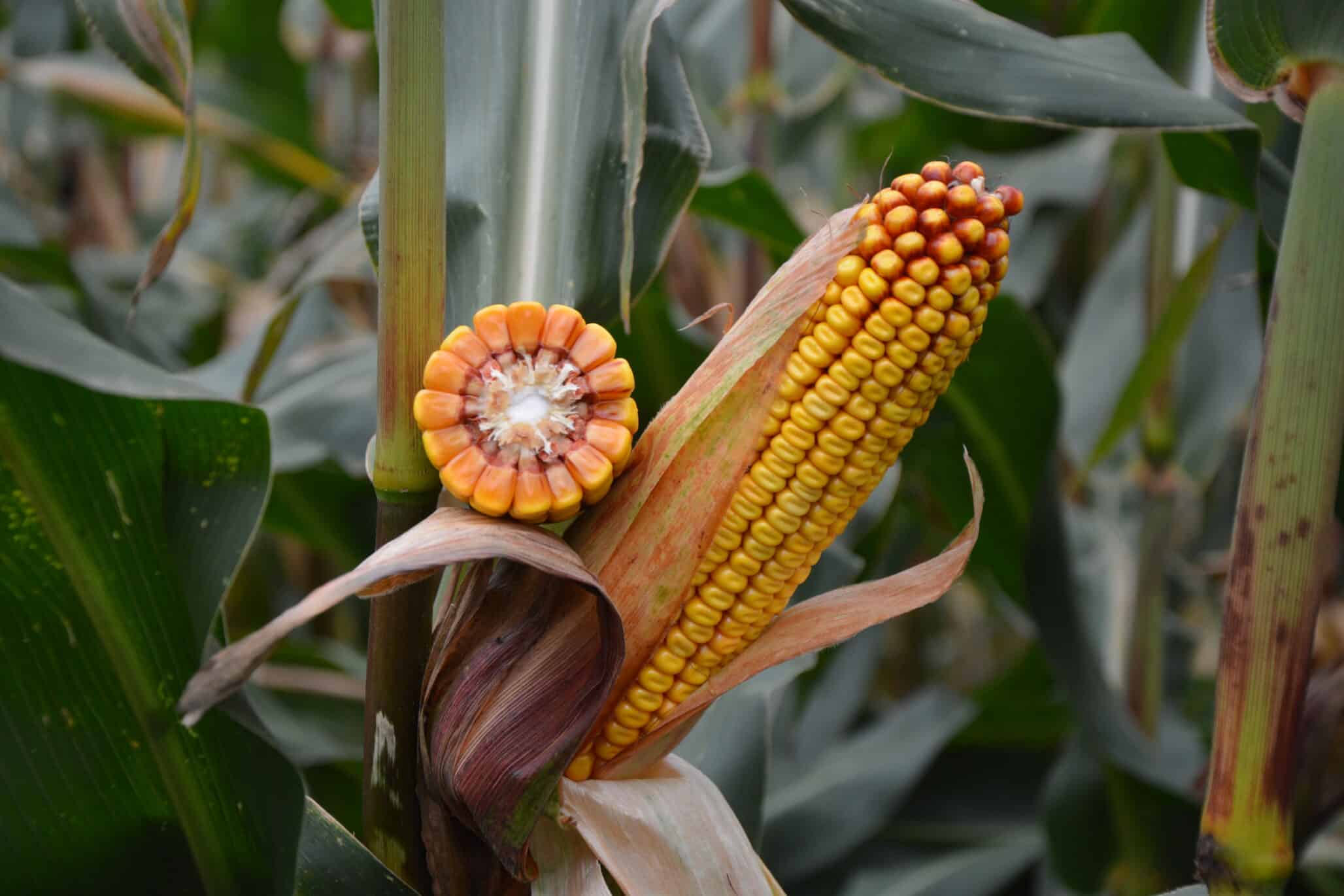A Purdue University study confirms complex associations among plant hormones and their signaling pathways that are key to controlling plant architecture.
Plant architecture is partly controlled through the production and perception of plant hormones. The loss of either the brassinosteroid or gibberellin plant hormones results in dwarfed plants. Removing both can increase this effect, which suggests that they control plant growth separately.
That’s important for scientists who want to understand how plants modify their architecture to compete for resources or create higher-yielding crops, such as corn. Creating dwarf varieties of the crop plant could increase yield or keep yield steady while reducing the required inputs such as fertilizers and water. Dwarf varieties of rice and wheat were made by essentially inhibiting the response to some hormones. But in corn, the interplay among hormones makes this more complicated.
Brassinosteroids and gibberellins are involved in more characteristics than just plant height in maize. Brassinosteroids, for example, are required for the tassels to contain flowers that produce pollen, and gibberellins are required for ears to only produce ovules.
“Plant cells use these hormones to communicate with each other to control development in a coordinated manner. These processes determine form and execute the correct cellular programs at the correct times,” says Brian Dilkes, a Purdue associate professor of biochemistry. “We will not be able to manipulate crop architecture for a particular goal if we don’t understand how moving one part causes another part to change. These are highly interactive systems, and the different cellular circuits impinge on one another.”
In a previous study, Dilkes and collaborators investigated the genetic interactions between the genes that encode proteins that help synthesize these two hormones in maize. Maize mutants that lacked either brassinosteroids or gibberellins were interbred. Combining these mutants masked some of the physical characteristics of the parent mutants, demonstrating that the two hormones were mutually dependent in the control of branching and tassel development.
In the journal Plant Direct, the Dilkes lab describes a test of these hormone interactions. By using plant growth regulators, commonly used in the horticulture industry to block production of these plant hormones, the interactions between the two hormones were tested again in maize. This work confirmed that in different parts of maize plants, the interplay between these hormones was different, demonstrating that hormone signaling is more complex than once thought.
For example, maize mutants lacking gibberellin have excess branches. Using a biosynthetic inhibitor in that mutant to block brassinosteroid production eliminated that branching. So, brassinosteroids were required for the lack of gibberellin to cause branching.
Dilkes says the findings show that the plant mechanisms responsible for sensing these hormones and creating physical characteristics are intertwined in ways that will take much more work to unravel.
The work also showed the efficacy of using biosynthetic inhibitors to study genetic interactions in plant hormones.
“Creating mutants and crossing them can take a significant amount of time and would need to be done for each species separately,” Dilkes says. “Knowing that these chemicals can give us the same information will allow us to explore the interplay of these hormones in multiple species.”
Guri Johal, a Purdue professor of botany and plant pathology, and Norman Best, who recently completed his doctorate in the Department of Horticulture and Landscape Architecture at Purdue, were co-authors. Their paper was the first manuscript published in Plant Direct, a new, open-access journal from the American Society of Plant Biologists and the Society for Experimental Biology that will accelerate the publication of scientific discoveries in plants. It is also one of the first papers published by the Purdue Center for Plant Biology, an interdepartmental alliance of faculty working on plant biology.
Next, Dilkes plans to investigate the interactions between the genes that perceive these hormones and are responsible for turning the signals into adaptive growth responses.
“It is one thing to identify that these pathways interact, and something else to determine and control how that interaction takes place,” he says.
Best will continue to work on hormone signal integration in his new job as a postdoctoral researcher at the University of Missouri.
Best received a U.S. Department of Agriculture award, and Dilkes and Johal received support from the National Science Foundation’s Plant Genome Research Program.
Submitted by Brian Wallheimer












